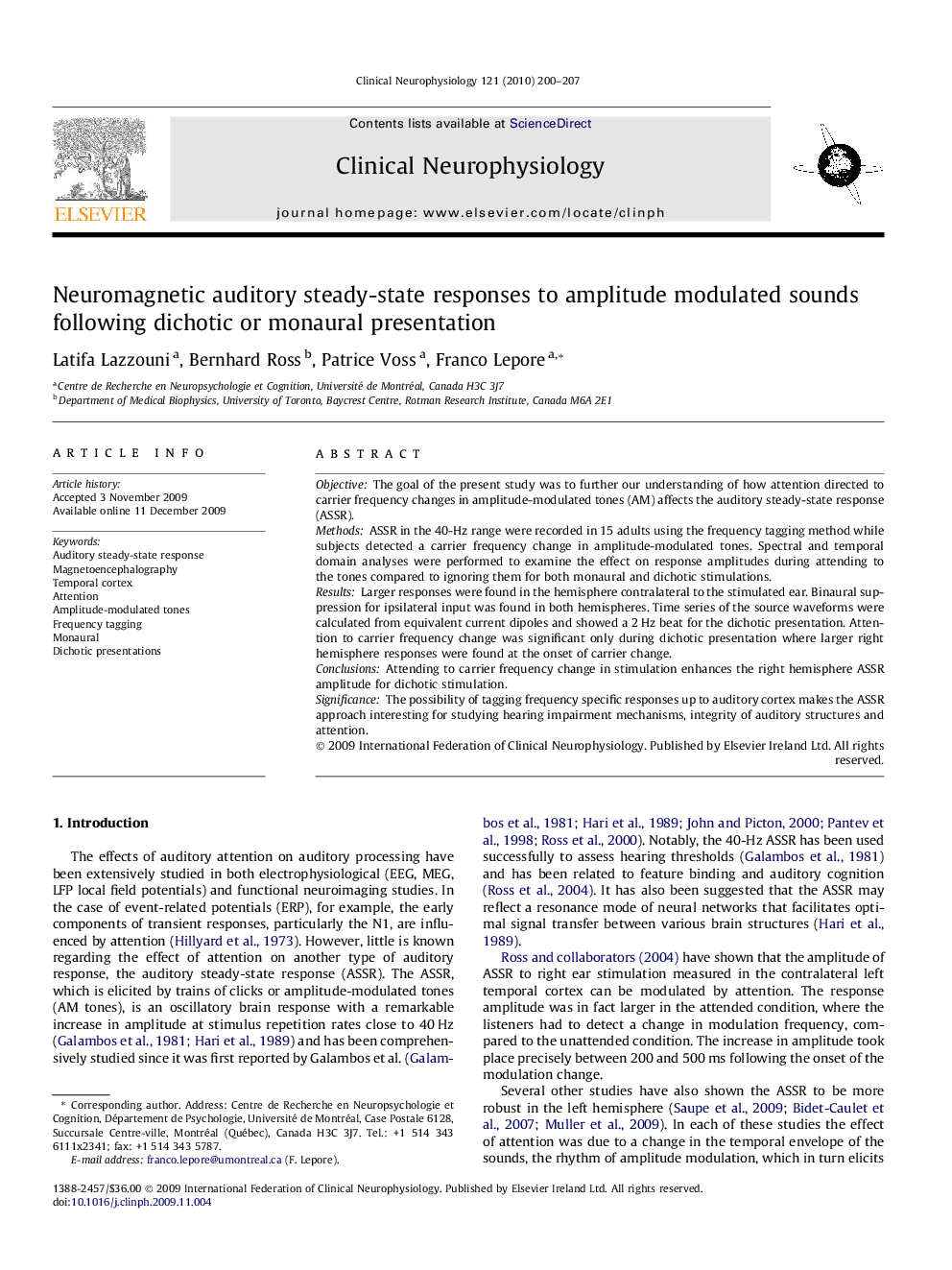| Article ID | Journal | Published Year | Pages | File Type |
|---|---|---|---|---|
| 3045322 | Clinical Neurophysiology | 2010 | 8 Pages |
ObjectiveThe goal of the present study was to further our understanding of how attention directed to carrier frequency changes in amplitude-modulated tones (AM) affects the auditory steady-state response (ASSR).MethodsASSR in the 40-Hz range were recorded in 15 adults using the frequency tagging method while subjects detected a carrier frequency change in amplitude-modulated tones. Spectral and temporal domain analyses were performed to examine the effect on response amplitudes during attending to the tones compared to ignoring them for both monaural and dichotic stimulations.ResultsLarger responses were found in the hemisphere contralateral to the stimulated ear. Binaural suppression for ipsilateral input was found in both hemispheres. Time series of the source waveforms were calculated from equivalent current dipoles and showed a 2 Hz beat for the dichotic presentation. Attention to carrier frequency change was significant only during dichotic presentation where larger right hemisphere responses were found at the onset of carrier change.ConclusionsAttending to carrier frequency change in stimulation enhances the right hemisphere ASSR amplitude for dichotic stimulation.SignificanceThe possibility of tagging frequency specific responses up to auditory cortex makes the ASSR approach interesting for studying hearing impairment mechanisms, integrity of auditory structures and attention.
